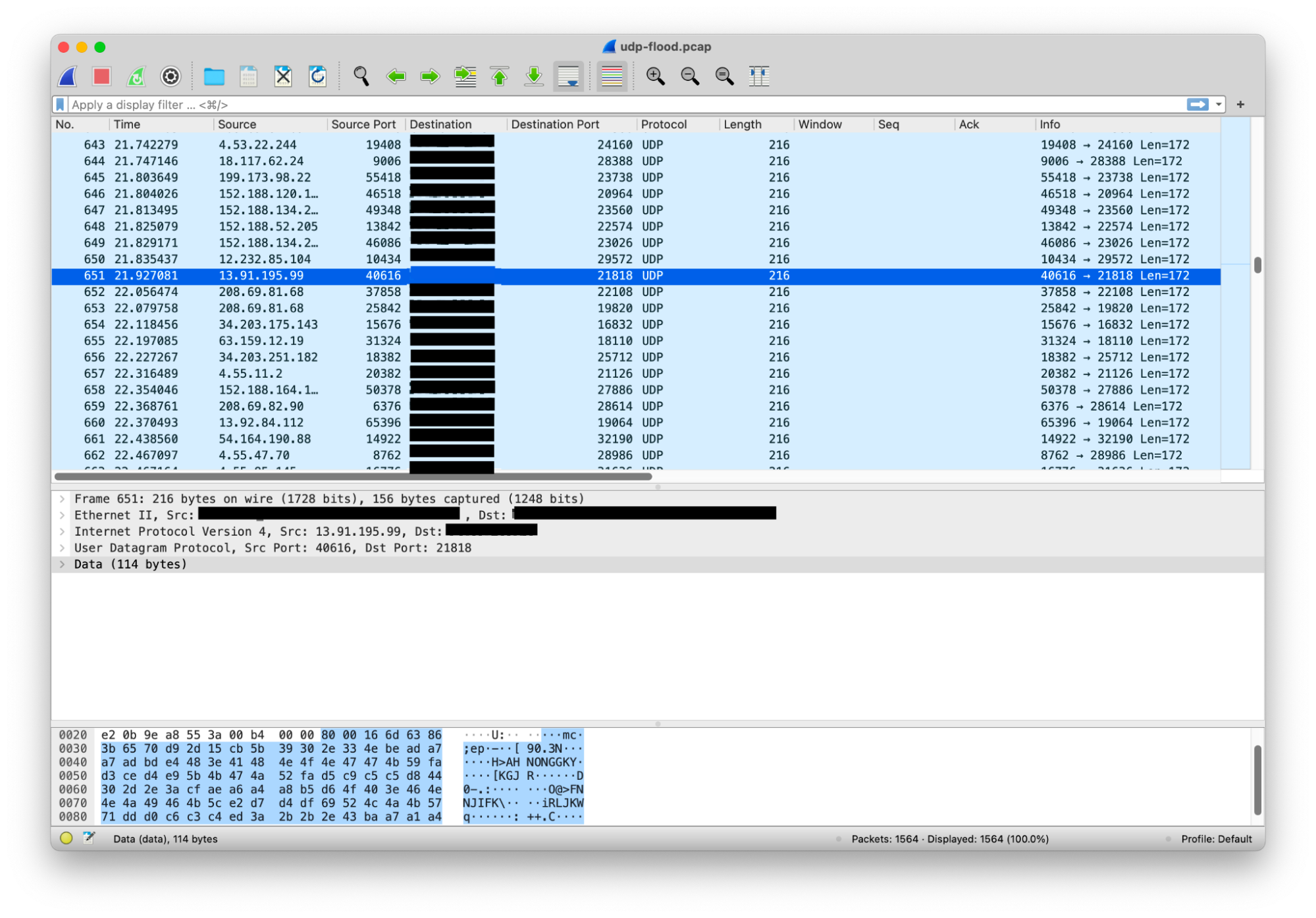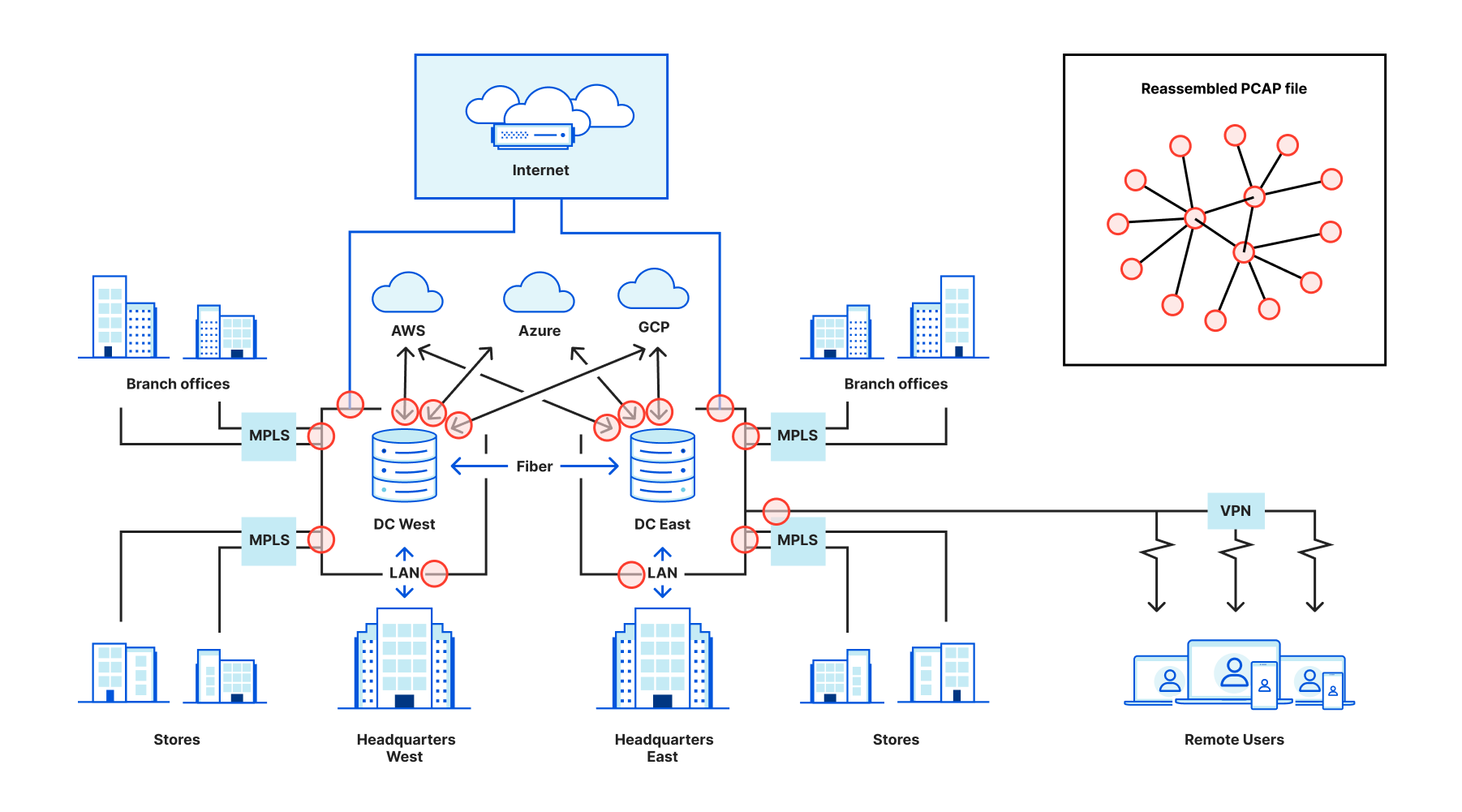Post Syndicated from Annika Garbers original https://blog.cloudflare.com/packet-captures-at-edge/


Packet captures are a critical tool used by network and security engineers every day. As more network functions migrate from legacy on-prem hardware to cloud-native services, teams risk losing the visibility they used to get by capturing 100% of traffic funneled through a single device in a datacenter rack. We know having easy access to packet captures across all your network traffic is important for troubleshooting problems and deeply understanding traffic patterns, so today, we’re excited to announce the general availability of on-demand packet captures from Cloudflare’s global network.
What are packet captures and how are they used?
A packet capture is a file that contains all packets that were seen by a particular network box, usually a firewall or router, during a specific time frame. Packet captures are a powerful and commonly used tool for debugging network issues or getting better visibility into attack traffic to tighten security (e.g. by adding firewall rules to block a specific attack pattern).
A network engineer might use a pcap file in combination with other tools, like mtr, to troubleshoot problems with reachability to their network. For example, if an end user reports intermittent connectivity to a specific application, an engineer can set up a packet capture filtered to the user’s source IP address to record all packets received from their device. They can then analyze that packet capture and compare it to other sources of information (e.g. pcaps from the end user’s side of the network path, traffic logs and analytics) to understand the magnitude and isolate the source of the problem.
Security engineers can also use packet captures to gain a better understanding of potentially malicious traffic. Let’s say an engineer notices an unexpected spike in traffic that they suspect could be an attempted attack. They can grab a packet capture to record the traffic as it’s hitting their network and analyze it to determine whether the packets are valid. If they’re not, for example, if the packet payload is randomly generated gibberish, the security engineer can create a firewall rule to block traffic that looks like this from entering their network.

Fragmenting traffic creates gaps in visibility
Traditionally, users capture packets by logging into their router or firewall and starting a process like tcpdump. They’d set up a filter to only match on certain packets and grab the file. But as networks have become more fragmented and users are moving security functions out to the edge, it’s become increasingly challenging to collect packet captures for relevant traffic. Instead of just one device that all traffic flows through (think of a drawbridge in the “castle and moat” analogy) engineers may have to capture packets across many different physical and virtual devices spread across locations. Many of these packets may not allow taking pcaps at all, and then users have to try to stitch them back together to create a full picture of their network traffic. This is a nearly impossible task today and only getting harder as networks become more fractured and complex.

On-demand packet captures from the Cloudflare global network
With Cloudflare, you can regain this visibility. With Magic Transit and Magic WAN, customers route all their public and private IP traffic through Cloudflare’s network to make it more secure, faster, and more reliable, but also to increase visibility. You can think of Cloudflare like a giant, globally distributed version of the drawbridge in our old analogy: because we act as a single cloud-based router and firewall across all your traffic, we can capture packets across your entire network and deliver them back to you in one place.
How does it work?
Customers can request a packet capture using our Packet Captures API. To get the packets you’re looking for you can provide a filter with the IP address, ports, and protocol of the packets you want.
curl -X POST https://api.cloudflare.com/client/v4/accounts/${account_id}/pcaps \
-H 'Content-Type: application/json' \
-H 'X-Auth-Email: [email protected]' \
-H 'X-Auth-Key: 00000000000' \
--data '{
"filter_v1": {
"source_address": "1.2.3.4",
"protocol": 6
},
"time_limit": 300,
"byte_limit": "10mb",
"packet_limit": 10000,
"type": "simple",
"system": "magic-transit"
}'
Example of a request for packet capture using our API.
We leverage nftables to apply the filter to the customer’s incoming packets and log them using nflog:
table inet pcaps_1 {
chain pcap_1 {
ip protocol 6 ip saddr 1.2.3.4 log group 1 comment “packet capture”
}
}
Example nftables configuration used to filter log customer packets
nflog creates a netfilter socket through which logs of a packet are sent from the Linux kernel to user space. In user space, we use tcpdump to read packets off the netfilter socket and generate a packet capture file:
tcpdump -i nflog:1 -w pcap_1.pcap
Example tcpdump command to create a packet capture file.
Usually tcpdump is used by listening to incoming packets on a network interface, but in our case we configure it to read packet logs from an nflog group. tcpdump will convert the packet logs into a packet capture file.
Once we have a packet capture file, we need to deliver it to customers. Because packet capture files can be large and contain sensitive information (e.g. packet payloads), we send them to customers directly from our machines to a cloud storage service of their choice. This means we never store sensitive data, and it’s easy for customers to manage and store these large files.
Get started today
On-demand packet captures are now generally available for customers who have purchased the Advanced features of Magic Firewall. The packet capture API allows customers to capture the first 160 bytes of packets, sampled at a default rate of 1/100. More functionality including full packet captures and on-demand packet capture control in the Cloudflare Dashboard is coming in the following weeks. Contact your account team to stay updated on the latest!